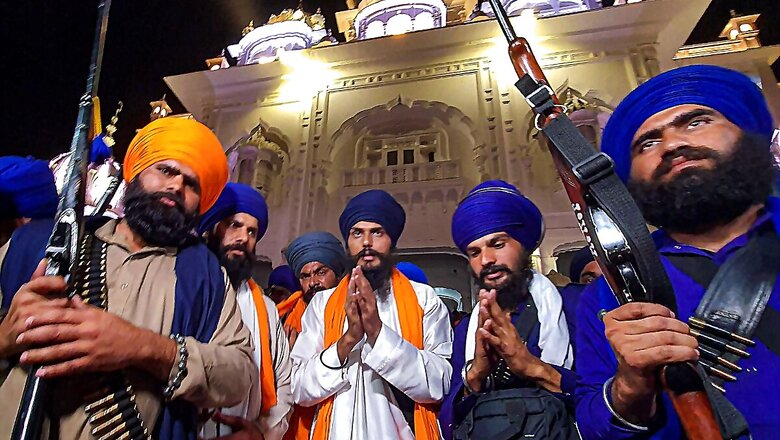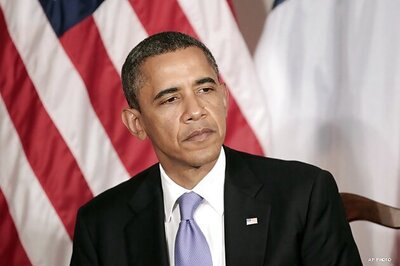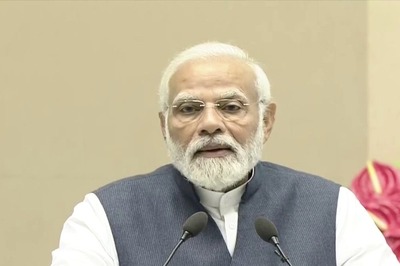
views
Punjab Police arrested Lovepreet Singh Toofan, a close aide of Khalistani leader Amritpal Singh, on charges of rioting and kidnapping last month. In no time, his supporters gheraoed a police station near Amritsar and gave cops a one-hour ultimatum for his release. Soon, the police station was raided and threats were issued to disturb law and order across Punjab. Amid escalating tension over his arrest, police chose to release Toofan saying he was not found guilty.
Radicalism, when it first makes an appearance, looks manageable and harmless. People tend to ignore it or even mildly support it for challenging the largely compromised and status quoist “system”. Police look the other way, believing that any stern action against these “upstarts” will bestow upon them unnecessary limelight. The political class, displaying its typically unscrupulous characteristics, looks for whatever little benefits it can accrue from the turn of events.
Fire in a controlled setup has its uses. Rebellion is akin to fire. Till the time it is under control, everyone has interests in keeping it alive. But once it spreads and becomes irrepressible, it threatens to destroy everything – and everyone. An India Today report of January 15, 1991, explains how the Punjab militancy of the 1980s initially received some sort of popular support.
“If your village school hasn’t had teachers for six years despite dozens of memoranda to the deputy commissioner, ask your friendly village militant. If he calls, the DC will listen. If the courts haven’t sorted out your land dispute for two decades, go to the militants’ Khalsa panchayat,” says the report.
But then the Khalistan fire went out of control. What began as a small-time protest against the moribund system took an all-gory and violent turn, threatening to decimate the entire system. The war was extended to all sections of Punjabi society – from schools and colleges to media and academia to finally administration and police. Policemen, judges and politicians were especially targeted. Such was the mayhem that in 1990 alone, 452 policemen died. The entire state had turned into a warzone. Supercop KPS Gill was called in. He was promised total support and no questioning to his methods of dealing with Punjab militancy. Fire was fought with more fire. Killings with more killings. As Gill himself wrote in a May 1999 article in his magazine, Faultlines, “The defeat of terrorism in Punjab… was unambiguously the result of the counter-terrorist measures implemented in the state by the security forces.” He even justified the use of coercive force in the state, calling it not just “a necessary expedient” but also “a fundamental obligation and duty of constitutional government”.
Today, things may not be that bad but there are parallels between the early 1980s and the early 2020s. If in 2023, cops released a prisoner after a police station was attacked in Amritsar, in February 1984, too, a group of militants had attacked a police post and captured six fully-armed cops and dragged them inside the Golden Temple. The police responded only after 24 hours when a senior officer went to meet JS Bhindranwale with folded hands at the Akal Takht. Bhindranwale agreed to hand over the corpse of a policeman who was killed. It was only later that the other five were released; thankfully, they were alive but had to leave behind their weapons, which included three Sten guns. No action was ever taken against the militants.
In recent years, one saw the government bending over backwards to appease protesting farmers on the issue of the newly introduced farm laws. Credible intelligence suggested a strong Khalistani presence in the movement. Maybe it was this fear of growing unrest abetted by Khalistani and anti-India forces over the farmers’ agitation that made Prime Minister Narendra Modi climb down on the three laws. But the situation in Punjab has only worsened, and one fears the Centre’s generosity has been construed as a sign of weakness. The time is ripe for the government to move in quickly and resolutely deal with vested elements, without vacillating between two poles of extreme paralysis and overreactions.
One also needs to call the Khalistan bluff, given the support the so-called cause is getting from Pakistan. Ironically and historically, Pakistan should have been the most worried nation about the idea of Khalistan. For, it tends to lose most of its territories to this vision with Lahore being the potential capital. If the proponents of Khalistan were true to their cause, they should have been fighting the Pakistani state instead of seeking their support to bleed India. Khalistan is a classic case of manufactured grievances.
The great Punjab paradox
Punjab is a unique state. Its distinctive socio-economic situation keeps it in a state of flux. It was ranked first in GDP per capita among Indian states in 1981 and fourth in 2001; today, it has been pushed down to the 19th position. Interestingly, both the rise and fall of Punjab’s economy have made its privileged class anxious and uneasy, though in different ways. The farm miracle in the state soon after the Green Revolution – though occupying just 1.6 percent of the total land area, Punjab at the height of the Green Revolution produced one-fourth of the total food grain in India – made its feudal elites anxious about losing their traditional hold over Punjabi society. In the 1980s, as Gill writes, the militancy was “a rebellion of a privileged quasi-feudal caste-based orthodoxy that saw its privileges shrinking”. Three decades later, with Punjab losing its growth mojo, the state’s traditional elites are still wary – but this time about losing the economic gains made in the heyday of the Green Revolution. Farm reforms pose a threat to their entrenched vested interests. The so-called year-long farmers’ protests, for instance, were the result of insecurities of the powerful arthiyas and their supporters in Punjab.
But the deeper, more fundamental malaise lies in the very nature of Sikhism. The religion has internalised the sufferings of its gurus who had to face insurmountable brutality at the hands of the Mughals. So much so that, to use VS Naipual’s words in India: A Million Mutinies, it “created in the believer the feeling of injustice and persecution, and perhaps even the wish to be persecuted”. Naipaul explains, “In this faith, when the world became too much for men, the religion of the 10th guru, Guru Gobind Singh, the religion of gesture and symbol, came more easily than the philosophy and poetry of the first guru. It was easier to go back to the formal baptismal faith of Guru Gobind Singh, to all things that separated the believer from the rest of the world. Religion became the identification with the sufferings and persecution of the later gurus: the call to battle.”
Then, of course, there’s a unique Sikh dilemma in India. Unlike in the west, which has a history of the minorities being singled out and persecuted, in India it’s the other way round: Hindus see Sikhs as an extension of Hinduism. They revere Sikh gurus. But this sense of Hindu unity and oneness makes a section of Sikhs wary about losing their distinct identity.
As Khushwant Singh writes in his book on Punjab and Punjabiyat, “Sikhism is an offshoot of Hinduism. Punjabi Hindus regard Sikhs as one of them and till recently brought up one of their own sons as a Sikh, intermarried with Sikh families, worshipped in Sikh gurdwaras and recited the Gurbani which they could understand in preference to slokas from the Vedas, Upanishads or the Gita which they could not.” He further explains how the Adi Granth is the epitome of Hindu-Sikh unity. “Of the 15,028 names of God that appear in the Adi Granth, Hari occurs over 8,000 times, Ram 2,533 times, followed by Prabhu, Gopal Govind, Parbrahm and other Hindu nomenclatures for the Divine. The purely Sikh coinage ‘Wahe Guru’ appears only 16 times.”
Conclusion
Punjab is at a crossroads today. The Green Revolution has failed the state in the long term – crop production has come down massively; the state’s soils are badly damaged; water tables have gone down to an alarming level; and, the overuse of chemicals and fertilisers in crop production has spiked cancer cases in the state. Add to this the deadly cocktail of shrinking privileges of Punjab’s feudal class with the minority syndrome and the persecution complex of Sikhs – and there’s a perfect recipe for the Khalistani disaster. And as India’s experience in the 1980s suggests, such problems cannot be controlled or curbed through concessions or appeasement. The Modi dispensation must learn from Indira Gandhi’s folly. She initially looked the other way when Bhindranwale was becoming powerful, hoping he would cut the Akalis to size but when he turned into a Frankenstein, she colossally overreacted by sending tanks into the Golden Temple. The Centre’s role becomes even more significant given the presence of a state government in Punjab that’s often accused of being too soft and sympathetic towards Khalistanis.
In India: A Million Mutinies, Naipaul mentions Gurtej Singh, who had resigned from the Indian Administrative Service to serve the Sikh cause. Naipaul asks him about the emphasis on suffering in Sikhism. Pat comes the reply, “This world is an unhappy place for many, and it (unhappiness) has to be eliminated. There are only two ways. Either you make somebody suffer, or you suffer.”
Khalistanis are clear in their mind: That they will make India bleed to forward their cause. But does India have that clarity of mind? The reactions of the government and the people at large seem to suggest otherwise.
(The author is opinion editor, Firstpost and News18. He tweets from @Utpal_Kumar1. Views expressed are personal)
Read all the Latest Opinions here



















Comments
0 comment